With the announcement of the SAP Commerce Cloud composable offering last March, SAP customers now have a lot more choice in how they design the commerce experience. Instead of only using tools in the SAP ecosystem, or paying for a suite of features that go unused, companies can now more easily mix-and-match capabilities from SAP Commerce Cloud and other software vendors.
For organizations looking to improve the digital customer experience, one of the most impactful ways to take advantage of this new level of composability is by combining SAP Commerce Cloud with a headless Content Management System (CMS).
Why companies are shifting to composable commerce
Big software suites, where all capabilities are designed to work smoothly together, can be great if your business needs align with the vendor’s framework. As digital becomes more of a differentiator, however, many companies don’t want to be locked into a one-size-fits-all set of tools.
The scope of digital experience has gotten too big, and business needs are too diverse, for a single vendor to be able to provide best-in-class capabilities for every part of it. A composable commerce approach lets companies create their own tech stack of best-fit solutions. Composable technology vendors typically focus on building excellent functionality for one domain, like content or search, and make it easy to integrate that functionality with other platforms and services.
Composable commerce lets companies add their own special sauce to the digital experience, and the popularity of the approach has led to a quickly growing market of solutions built to be composable from the ground-up. While many platforms that were originally an all-in-one suite, like SAP Commerce Cloud, are updating their offering from both a technology and pricing perspective to support a composable approach.
Why headless goes hand in hand with composable commerce
Headless technology separates, or “decouples”, backend logic from frontend presentation. Backend data and functionality is communicated via APIs, which gives this information a structure that allows it to be used in different ways on different frontend channels like webshops, mobile, brand sites, customer portals, etc.
This API-enablement is key to connecting a composable tech stack. Solutions have a standard way to talk to one another, so teams can work with a variety of platforms and data sources then bring everything together on the frontend.
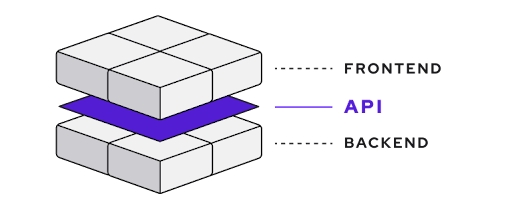
Going composable with SAP Commerce Cloud
SAP Commerce Cloud is a powerful platform and many companies have built business processes around its ability to handle unique pricing models, customer structures, order management, and complex B2B scenarios. The ability to now keep that core SAP functionality while also embracing composable commerce to improve and extend different parts of the experience opens a lot of new opportunities for customer experience.
Don’t replatform, modernize
If trying out a new approach to digital experience means having to rip-and-replace the core commerce features a business depends on, and has heavily invested in, it often doesn't seem worth the risk.
Composable commerce offers a more pragmatic solution to updating your commerce architecture. The same API-based approach that makes it possible to connect the functionality of different composable tools also makes it easier to replace that functionality over time. Adding a new solution for certain functionality, like promotions or checkout or personalization, means rerouting the relevant APIs and not rewriting the entire codebase.
This allows teams to avoid a big bang replatforming and, instead, deliver value incrementally while reducing technical debt over time.
Frontend-first approach to modernizing SAP Commerce Cloud
Improving the frontend customer experience is a great place to start with modernization. It allows you to see value relatively quickly, as optimizing digital channels can lead to increased customer engagement, conversion rates, and average order value.
Putting in place a flexible headless setup for the SAP storefront is a good first step. This can be done by combining SAP Commerce Cloud with a headless CMS and a composable frontend solution.
In a headless approach, the frontend and backend can be updated and deployed independently, letting teams make rapid changes to the customer experience without risking backend processes. While the API-based nature of headless means that, as other parts of the tech stack are modernized, the frontend can be easily connected to new solutions.
Creating the composable frontend: SAP SmartEdit or a third-party CMS?
SAP does offer a headless CMS, SAP SmartEdit, that is designed to work with the SAP ecosystem.
SmartEdit can be a good option to get started, especially when a company is more focused on getting the backend commerce functionality in place, but once teams are ready to create more unique frontend experiences and bring in third party tools they run into the limitations of SAP SmartEdit.
Even SAP’s own Global Head of CX Solution Advisory said, when discussing SAP’s approach to composable, that as companies start focusing on audience engagement they may find they’ve outgrown the capabilities of SmartEdit and need to look for a third party solution that offers more flexibility.
4 great headless CMS solutions for SAP Commerce Cloud
Most enterprise-ready headless CMS solutions on the market will provide a shared set of core benefits:
Flexibility: The API-based architecture allows nearly unlimited choice in how content data is sourced, structured, enriched, and delivered.
Omnichannel: Content data is structured which allows it to adapt to different frontend channels, offering the ability to ‘create once, publish everywhere’.
Integrations: Functionality and data are exposed via APIs, simplifying integrations in general, and pre-built connectors are typically available.
Usability: APIs allow for very efficient development, and most vendors have put substantial effort into creating a user interface (UI) for marketers and merchandisers to manage content.
Like with any composable solution, choosing the right one comes down more to “best-fit” than “best-in-class” and will depend on which CMS your team finds the most intuitive, supports your workflow, offers pre-built integrations with your stack, and aligns with other business priorities.
If you’re considering adding a headless CMS to SAP Commerce Cloud, the following overview of SAP CMS options is a great place to start your search.
1.Contentful
Contentful is one of the 6 strategic vendors featured in SAP’s announcement of their composable commerce offering. They were one of the first natively-headless CMS solutions on the market and have a reputation for being especially developer-friendly.
The Contentful solution for SAP Commerce Cloud lets you use SAP product and category data directly in the Contentful user interface. It is available on the SAP marketplace.
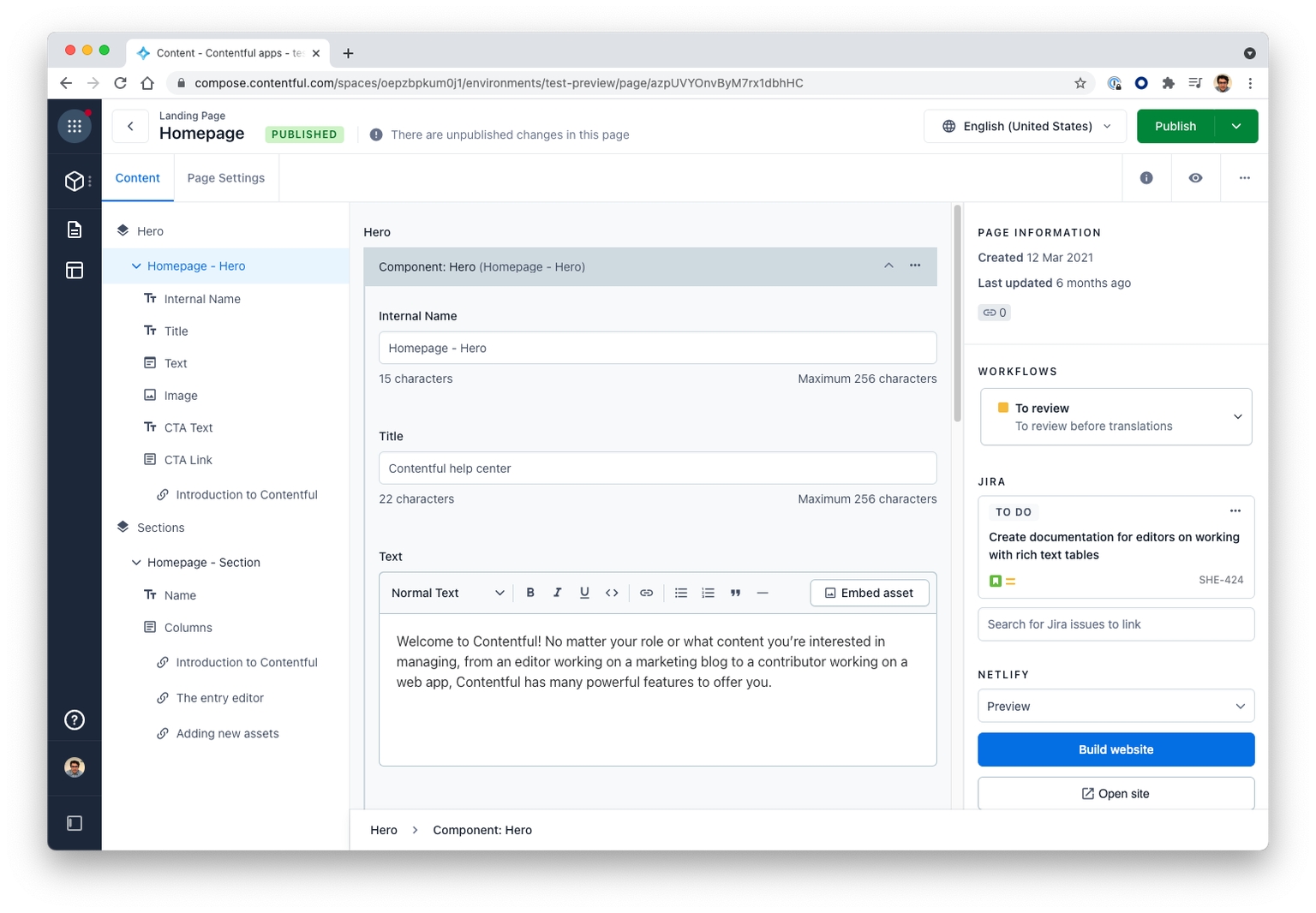
2. Contentstack
Contentstack is a natively-headless CMS that offers a lot of usability features that let developers and non-technical teams work independently. Such as their recently launched no-code approach creating workflow automations.
The Contentstack solution for SAP Commerce Cloud lets you use SAP product and category data directly in the Contentstack user interface. It is available on the SAP marketplace.
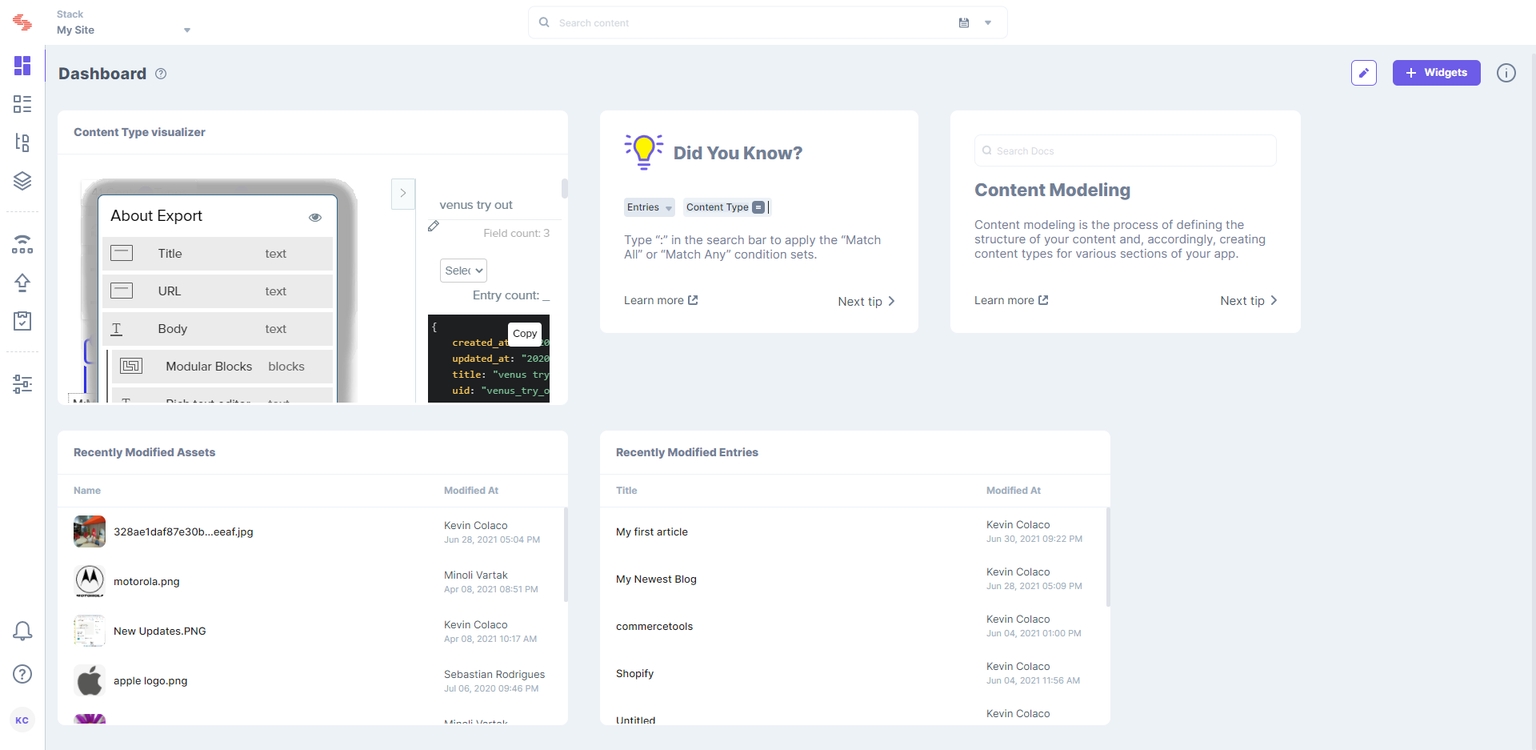
3. Magnolia
Magnolia is no stranger to the complexities involved in modernizing technology, having transitioned their own CMS to a headless model in the last few years. They’ve been involved in SAP Commerce Cloud projects since the platform was still known as Hybris, working with implementation partners that know the ins and outs of the SAP ecosystem.
The Magnolia solution for SAP Commerce Cloud lets you use SAP product and category data directly in the Magnolia user interface. It is available on the SAP marketplace.
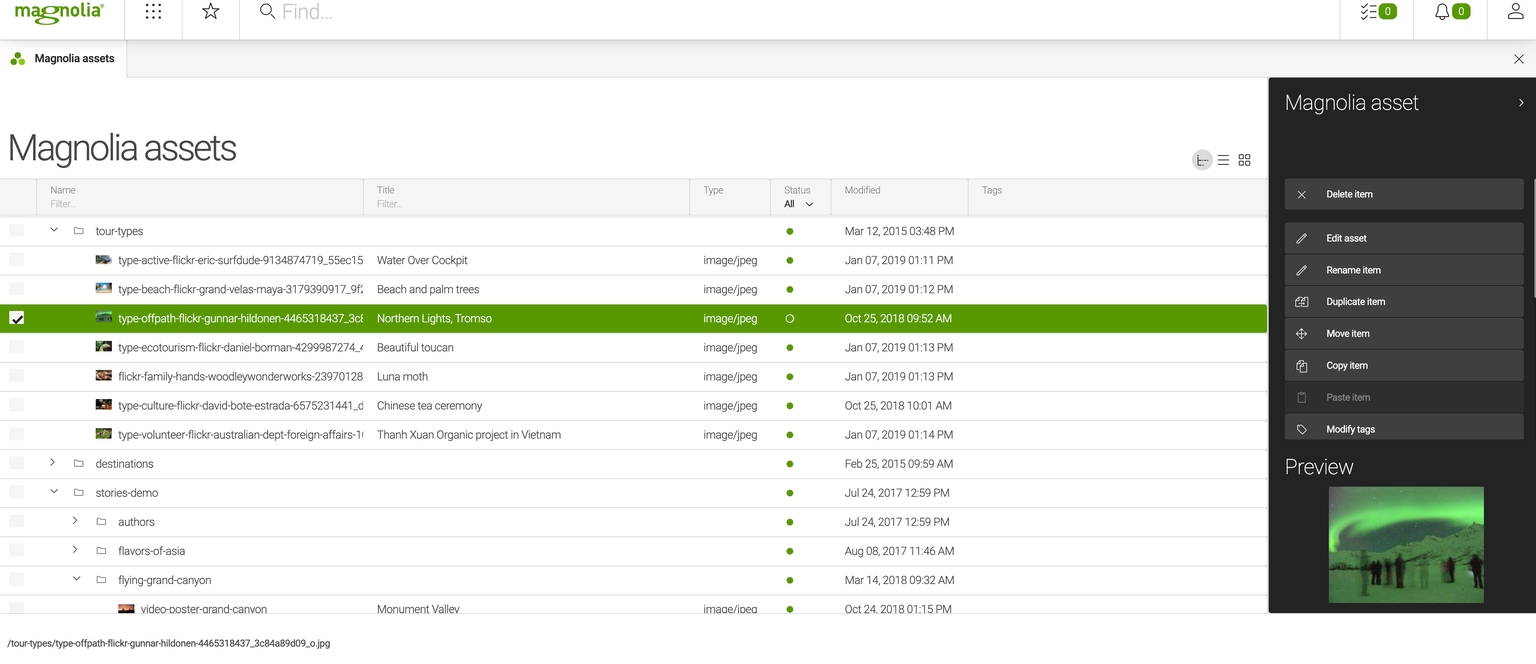
4. Amplience
Amplience offers a headless CMS as well as digital asset management (DAM) and has advanced features for working with visual content like product images and videos. They are strictly focused on commerce, so feature development is centered on eCommerce needs.
The Amplience solutions for SAP Commerce Cloud lets you use SAP product and category data directly in the Amplience CMS user interface. Amplience also offers a solution for the Amplience media optimizer and SAP Commerce Cloud that allows you to manage product media within Amplience and take advantage of optimizations like image variants, product roundels, and mobile-ready images.
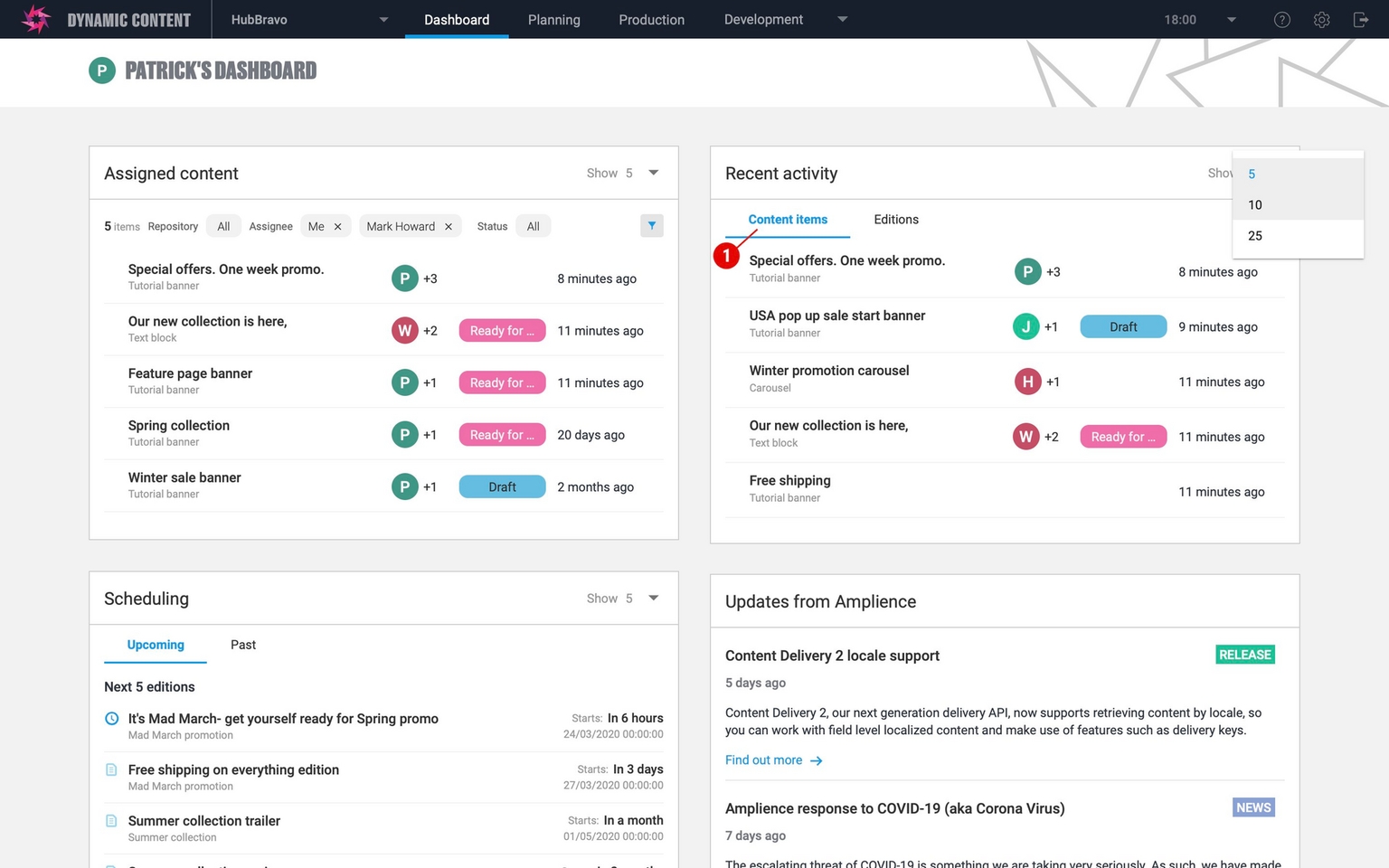
Creating the heads for headless CMS
To display the content that lives in your headless CMS you need to create a frontend “head” such as a webshop or mobile app. For SAP Commerce Cloud users, there are three general ways to do this:
SAP Commerce Cloud, composable storefront. An Angular-based storefront, formerly known as Spartacus. The main limitation of the composable storefront is that it’s designed to primarily work with the SAP ecosystem and it’s difficult to customize or integrate with third party tools. Which can negate a lot of the flexibility of an external headless CMS.
Build from scratch. Create your own frontend using a frontend framework like React, Vue.js, Qwik, and Angular. This allows for complete customization, but also requires developer expertise in everything from infrastructure to user components. As well as having to spend time “reinventing the wheel” when it comes to basic web features.
Frontend as a Service (FEaaS). A FEaaS solution takes care of the foundational building blocks of infrastructure, common components, and key integrations so that developers can spend their time focusing on the frontend capabilities unique to their business.
Alokai is a flexible Frontend as a Service for SAP Commerce Cloud
Alokai is a FEaaS solution that can help teams efficiently create a composable storefront for SAP Commerce Cloud. Alokai makes it easy to build storefronts that are tech agnostic, meaning that you can connect them with any backend solution. Teams can create storefronts that fully leverage the flexibility of the headless CMS they invest in, while still following the best practices for SAP Commerce Cloud development.

Alokai makes it easy to bring together your composable commerce stack with:
50+ fully customizable frontend components;
30+ out-of-the-box integrations with popular platforms;
High-performing architecture for mobile and desktop;
An API orchestration layer to bring all your composable components together.
Combining Alokai with SAP Commerce Cloud and a headless CMS lets SAP customers quickly level up their frontend experience, and gives them the flexibility to gradually modernize the backend applications that drive that experience.
The Alokai solution for SAP Commerce Cloud is available on the SAP marketplace. If you’d like to learn more, please get in touch.
